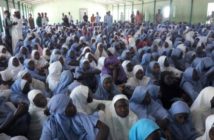How can a country like Nigeria with a population size of about 173.6 million (World Bank) tap into this multitude of people to enhance the economic well-being of its citizen?
According to a recent World Bank study on Demographics and Development Policy, by 2011 there will be more than 7 billion people in the world, with 8 billion in 2025 and 9 billion before 2050. New technologies and institutions, and a lot of hard work have enabled us to avoid widespread Malthusian misery. Global income per capita has increased 150 percent since 1960, outpacing the growth of population.
But we cannot assume that incomes will continue to grow.
One major difference is that now the world has a much larger population to support and, more notably, nearly all of the population increase that is projected in the coming decades will occur in the most politically, socially, and economically fragile countries. Do you have Nigeria or any other African countries in mind?
Nigeria, with a total dependency ratio at 89 %, youth dependency ratio at 83.8 % according the World Bank, and a huge population – there is an enormous potential in the size of its population that can be utilized to kick start Nigeria’s economic growth.
In this report, Nigeria, despite its strong fundamentals, has been hobbled by inadequate power supply, lack of infrastructure, delays in the passage of legislative reforms, an inefficient property registration system, an inconsistent regulatory environment, a slow and ineffective judicial system, unreliable dispute resolution mechanisms, insecurity, and pervasive corruption. Economic diversification and strong growth have not translated into a significant decline in poverty levels – over 62% of Nigeria’s 170 million people live in extreme poverty.
Demographic Transition – population and age structure
The report noted that the rate of population growth is not the only demographic variable with consequences for economic growth and development: the age structure of the population is also fundamentally important. The demographic transition population growth has taken place as
part of a broader phenomenon known as the demographic transition – the transition that almost all countries make from high fertility and mortality to low fertility and mortality. Not counting net migration (which has been inconsequential for most countries), populations grow because death rates tend to decline before birth rates. But there is more to this story: death rates decline disproportionately among infants and children, which gives rise to a baby boom. This is not the usual kind of baby boom in which more babies are born; rather, it is one in which more babies survive and mature into children and adults. Eventually the baby boom ends when parents realize that they do not need to have as many children to reach their goals for family size, which naturally moderate as development proceeds.
THE DEMOGRAPHIC DIVIDEND – What is it
Demographic dividend will result when after 15 to 20 years the large “ baby boom” cohorts reach the prime ages for working and saving, and the per capita productive capacity of the economy expands. When this happens, the country has an opportunity to grow rapidly.
The report also pointed that for a nation to enjoy economic freedom like the developed world, countries in sub-Saharan Africa need to drastically reduce their population through birth control measures.
I found this argument on population growth contradictory in the report because on one hand it concludes that population growth (due to increase in birth rate) and age structure are important drivers of economic growth (measured by income per capita), while at the same time reduced fertility frees up women to engage in the paid labor force. It then assumed that lack of decline in sub-Saharan Africa’s birth rate is the leading cause of corruption, political instability, lack of good infrastructure and other enabling environments for investment.
It is important to note that drastic reduction in fertility in the developed world have created a skill gap situation in their respective societies which now leads to other phenomena – brain drain from less developed nations, immigration and culture clashes. Effects of China’s population control have led to gender imbalance and some other demographic issues.
The best way to attain our economic potential is to make the most of our robust population. Historically, the Malthusian Population Theory has been debunked by social scientists over the years. Considering the fact that the Netherlands, with a higher population density per square kilometer (446.1) than Rwanda (415.5). Netherlands economic freedom is far superior that of Rwanda and most other Africa countries with similar lower population densities than the dutch.
Rather than concentrate on lowering fertility (through abortion and other means), emphasis should be placed on tackling widespread corruption, political instability, lack of good infrastructure and other enabling environments for investments and job creations.
The Policy Environment
Economic growth – Taking advantage of a demographic opportunity depends on a conducive policy environment. Good governance matters, as do solid macroeconomic management, a carefully designed trade policy, efficient infrastructure, well-functioning financial and labor markets, and above all, effective investments in health, education, and training.
Better health means that students learn more quickly, workers produce more effectively, foreign investors are more likely to be attracted, and savings rise. Expanded access to better quality education—at the primary, secondary, and tertiary levels—are also key to high worker productivity, especially in the rising number of jobs that demand up to date skills and a high degree of flexibility.
POLICY MAKERS ON THE BENEFITS OF DEMOGRAPHIC DIVIDEND:
Nigeria’s NGOZI OKONJO-IWEALA, managing director of the World Bank “One of the greatest untapped growth drivers in Nigeria’s economy is our youth population,” adding that the “public and private sectors should invest in human capital, labor supply, and savings to secure the demographic dividend. These help to create knowledge based economy. Policies should be directed toward getting the demographic dividend.”
Indian Prime Minister MANMOHAN SINGH: “Looking ahead, we enjoy a demographic dividend in terms of a growing working-age population in a world that is aging rapidly.”
Former Mexican President VICENTE FOX: “I also want to tell you that today we have a very potent arm with which to overcome inequalities and marginalization. That arm is what we have called the demographic dividend. … It is crucial, truly crucial, that we take full advantage of it. Otherwise, we will have lost a great opportunity. As others have said before me, education and employment are the ways to take advantage of the demographic dividend. … The sustainability of our social and economic development depends, in large measure, on our response to this opportunity.”
NANDAN NILEKANI, former CEO of India’s Infosys and now chairperson of the Unique Identification Authority of India: “… [The] demographic dividend could well become a demographic disaster if we do not make the right investments. … We have this beautiful opportunity; let us not mess [it up].”




